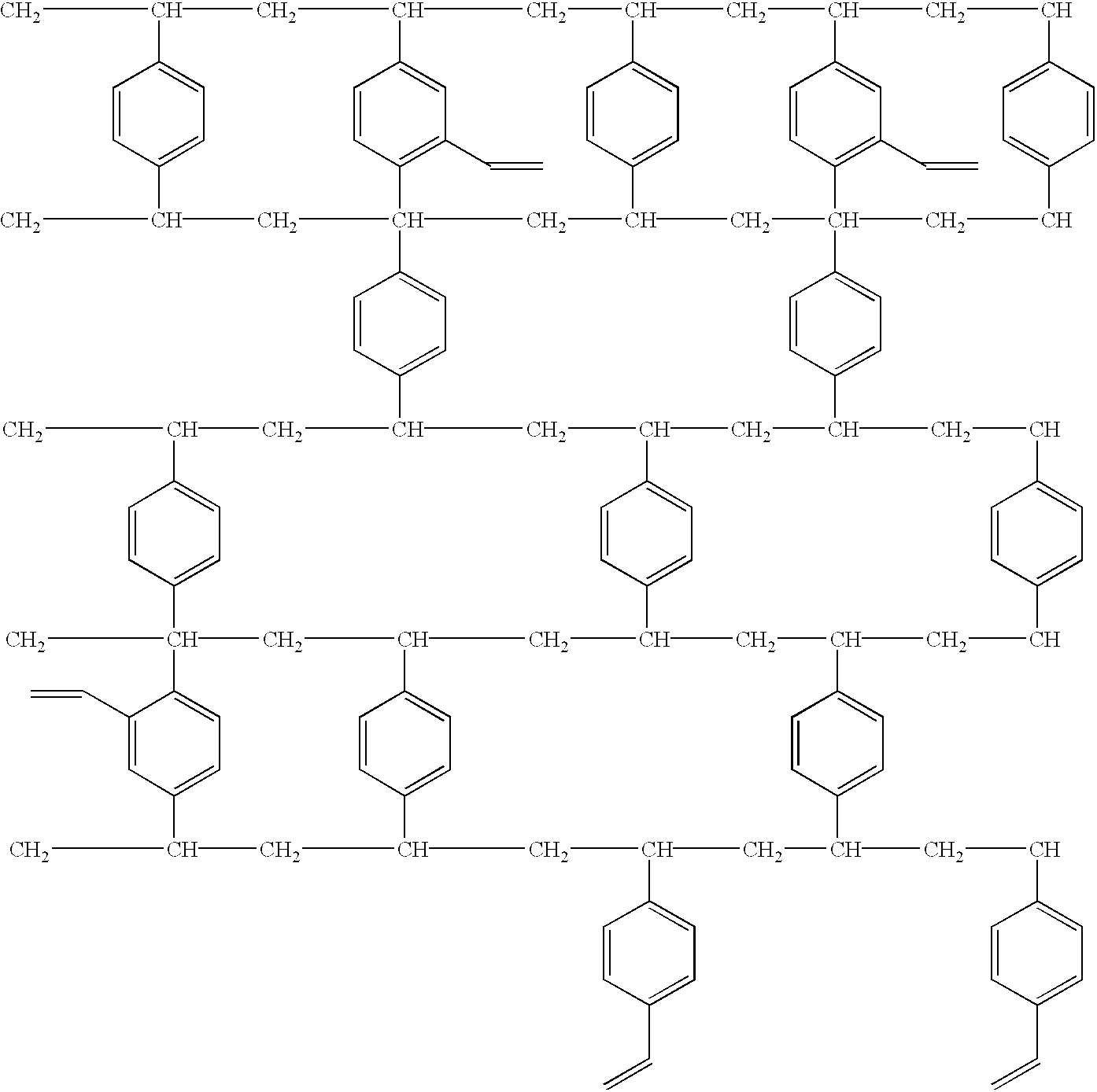Coated polymer article and its use
a polymer article and coating technology, applied in the field of coating polymer articles, can solve the problems of inability to clean with alkali, inability to use alkali, and inability to stabilize silicon gels, and achieve the effects of reducing the amount of solvent used, high capacity of a given porous support, and large variety of hydrophobicity/hydrophilicity and selectivity
- Summary
- Abstract
- Description
- Claims
- Application Information
AI Technical Summary
Benefits of technology
Problems solved by technology
Method used
Image
Examples
example 2
31.18 g hexylamine were added to 199.90 g aqueous suspension (dry content: 20.0 g) of the brominated particles from example 1. Heating to 90.degree. C. was started at the same time. After 24 hours 300 ml ethanol m / 10% isopropanol were added during a period of 10 minutes. The suspension was agitated for 25 minutes and then filtrated and washed with 0.8 l water, 1.6 l 0.1 M NaOH and 2.0 l water.
example 3
43.51 g hexadecylamine were added to 120.0 g aqueous suspension (dry content: 12.0 g) of the brominated particles from example 1. Heating to 90.degree. C. was started at the same time. After 24 hours 180 ml ethanol m / 10% isopropanol were added during a period of 10 minutes. The suspension was agitated for 25 minutes and then filtrated and washed with 0.4 l ethanol m / 10% isopropanol, 0.48 l water, 1.0 l 0.1 M NaOH and 1.2 l water.
example 4
7.5 ml lauroyl chloride and 0.95 ml diisopropylethylamine were added to 90.13 suspension (dry content: 9.0 g) of the particles from example 2 in dry acetone at ambient temperature. After 2 hours the suspension was filtered and washed with 360 ml acetone and 360 ml ethanol.
PUM
| Property | Measurement | Unit |
|---|---|---|
| diameter | aaaaa | aaaaa |
| pH | aaaaa | aaaaa |
| diameter | aaaaa | aaaaa |
Abstract
Description
Claims
Application Information
 Login to View More
Login to View More - Generate Ideas
- Intellectual Property
- Life Sciences
- Materials
- Tech Scout
- Unparalleled Data Quality
- Higher Quality Content
- 60% Fewer Hallucinations
Browse by: Latest US Patents, China's latest patents, Technical Efficacy Thesaurus, Application Domain, Technology Topic, Popular Technical Reports.
© 2025 PatSnap. All rights reserved.Legal|Privacy policy|Modern Slavery Act Transparency Statement|Sitemap|About US| Contact US: help@patsnap.com



